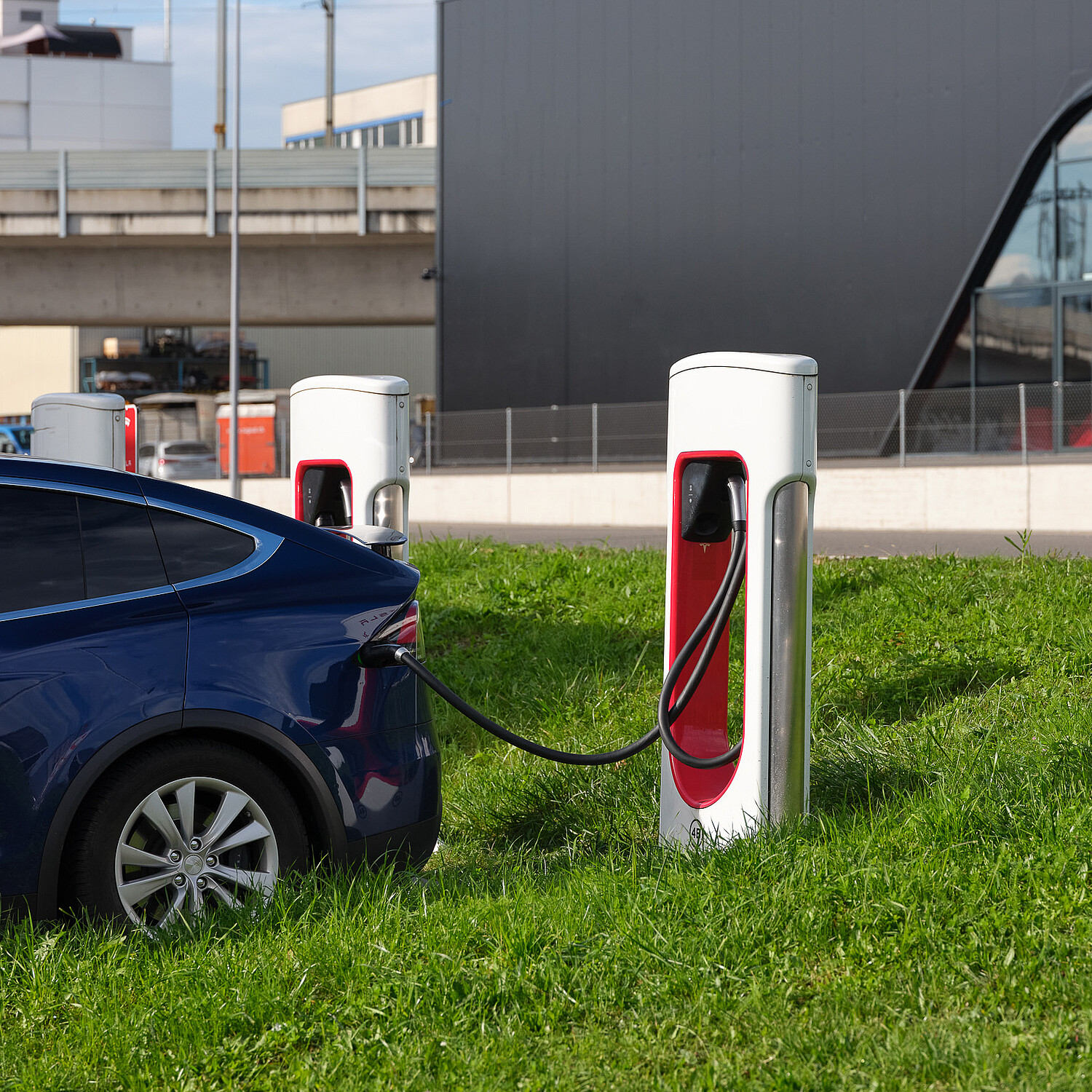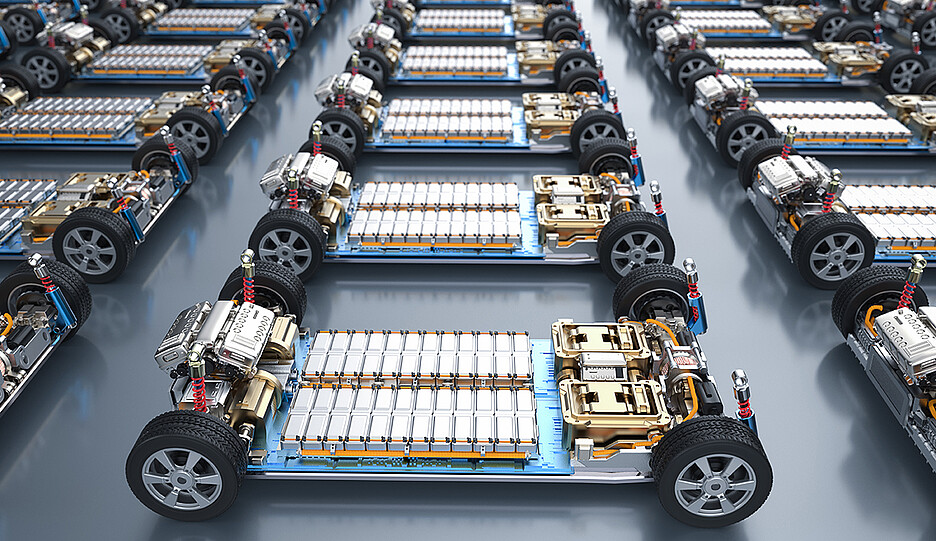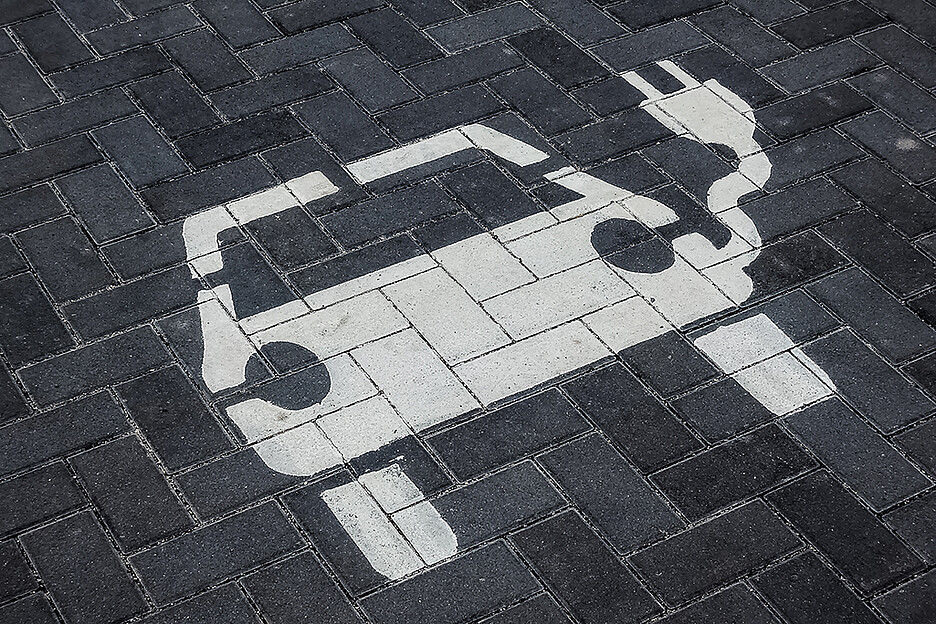
Electric cars are not the perfect answer
Electric cars represent a key step forward towards more sustainable mobility for the future – all the more so, since their batteries can be put to use as buffer storage for renewable energies. A genuine mobility revolution, however, requires a scrutiny of our ownership and driving habits.
While industry, agriculture and the buildings sector in Europe are emitting less greenhouse gas today than previously, CO2 emissions in traffic have continued to increase over the past few decades. Of the means of transport on the road, it is passenger cars that produce by far the most CO2. “Vehicle engines have become increasingly efficient over the years,” says ZHAW mobility researcher Thomas Sauter-Servaes. “But there has been a commensurate rise in demand for bigger and heavier vehicles.” Not only have cars within the same vehicle class assumed ever greater dimensions. An increasing number of people have also switched to a higher class – with a particular penchant for SUVs.
“Without the use of renewable energies, the sustainability effect of automotive electrification is wiped out.”
The route to a more sustainable mobility future thus clearly goes via the electric car, Sauter-Servaes is convinced. Today a mere 1.5 percent of all passenger cars in Switzerland have an electric drive but electric cars have already accounted for 16 percent of all the passenger cars newly registered this year. “A passenger car with a combustion engine is set to be more expensive than an electric car in just a few years’ time,” the lecturer at ZHAW School of Engineering estimates. That could constitute the tipping point for e-mobility.
An emission-neutral drive is not the same as an emission-neutral car
Sauter-Servaes is also not without his reservations when it comes to electric cars. “The electric car is doubtless the most pragmatic and easiest follow-on solution to take us forward at the moment,” says the ZHAW researcher. “But this does not make it into the perfect answer.” We have to make sure that we are not simply shifting problems from the transport sector to the energy sector. “Because without the use of renewable energies, the sustainability effect of automotive electrification is wiped out.” Also, an emission-neutral drive does not mean that the vehicle as a whole is emission-neutral. Precisely the production of the vehicle’s batteries is likely to be far from emission-neutral, particularly since the trend toward ever-larger products seems to be continuing in the case of electric vehicles as well. “Here too, it will doubtless soon be a question of who gets the furthest with which battery.” But the more powerful the battery, the more raw materials it will potentially contain – and the more CO2 will be emitted into the atmosphere on top of it.
Added to this, comes the fact that the more affordable electric cars become, the more they will promote motorisation on a global basis, as the Head of the Transportation Systems programme reminds us. China, in particular, is pressing ahead with the development of electric cars in order to eliminate its dependence on foreign, and especially American, oil. The question also remains as to what will happen with all the petrol- and diesel-powered vehicles once they are no longer permitted to drive on the roads in our latitudes at some point in the future. If these cars are then sold to South America or Africa at rock-bottom prices, the environmental problems may perhaps have been banished from Europe but they certainly won’t have disappeared from the global stage.
We need to rethink the use and ownership of cars
“Electric cars work so well as a solution because – as long as we have sufficient charging infrastructure – we don’t really have to question our mobility routines at all,” says Sauter-Servaes. “Electric vehicles ultimately further cement our car-centric way of life.” This is why it is quite clear to the mobility researcher that what is required is a new type of drive. Yes, we need an energy transition, and we also need to switch production to a circular economy. But that’s not enough. “We also need to rethink the use and ownership of cars.” Does a car really have to serve every conceivable purpose? Does it have to be able to transport the entire contents of our home even though we rarely have more than a sports bag in the boot on most days? Does absolutely everyone need their own car? “The mobility revolution will only succeed with far fewer vehicles.”

Parked cars do not have to mean unused cars
Even with e-vehicles, one thing will doubtless not change straightaway – cars are standing still for most of the time. “Contrary to the case of cars with combustion engines, this does not mean that electric vehicles also have to remain unused,” says Jörg Musiolik, lecturer at ZHAW School of Engineering. A number of vehicle manufacturers are already selling their electric cars with bidirectional batteries today. This means that they are not only able to power the car but can also be used as temporary storage, for example if a household produces more solar electricity than it consumes. Bidirectional batteries can be both charged and discharged.
“Contrary to the case of cars with combustion engines, this does not mean that electric vehicles also have to remain unused.”
Musiolik explains that the pioneers here are Japanese car manufacturers such as Nissan or Honda who started to develop batteries of this kind as a reaction to the reactor catastrophe in Fukushima. This secondary use for batteries that are available anyway makes perfect sense, says the ZHAW researcher who specialises in sustainable energy systems. The batteries ultimately only have to be made available and networked – a manageable outlay compared with solutions such as pump storage plants which incur high costs for both installation and operation.
From private consumption to support for the grid
As long as there are relatively few electric cars on the market, Musiolik expects bidirectional batteries to be used primarily to optimise the owners’ private consumption and to break load peaks. If, however, electric vehicles come to dominate the road at some stage, this would open up completely new options once again. “Someone managing not two but 100 vehicle batteries can also sell the free battery capacity on the energy balancing market,” the ZHAW lecturer explains. This would not only avoid having to expand the electricity grid, which would doubtless be necessary in order to cope with so many electric vehicles, but would also mean that the vehicle batteries could be used for the integration of renewable energies which, by their very nature, are subject to pronounced fluctuations and require correspondingly flexible storage solutions.

As part of a special research project, Musiolik just recently studied the storage potential of bidirectional vehicle batteries for the solar power grid of a residential area. The 200 households in the Basel Erlenmatt-Ost district had two electric vehicles at their disposal on a loan basis. While the batteries only managed to reduce the evening peaks of up to 300 kWh by a maximum of 20 kWh, this did not mean that the study was in any way less successful, since the project that Musiolik was managing was aimed primarily at showing that vehicle-to-grid technology can be implemented quite readily. In addition, a far greater number of electric vehicles are likely to be parked on the site in future.
Solution with a limited service life
What holds true for other car components is also true for the car battery – it has a finite service life. This applies in two respects as far as the battery of an electric car is concerned. On the one hand, the battery will most likely need replacing at some point in time, says Musiolik. “After which, it could at best be employed as a stationary second-life battery to provide buffer storage.” On the other hand, using the battery for electricity storage will only be a solution as long as cars still stand around unused for so many hours each day. This could change in future with the advent of the autonomous car. It’s thus a matter of making the most of it now.
0 Comments
Be the First to Comment!